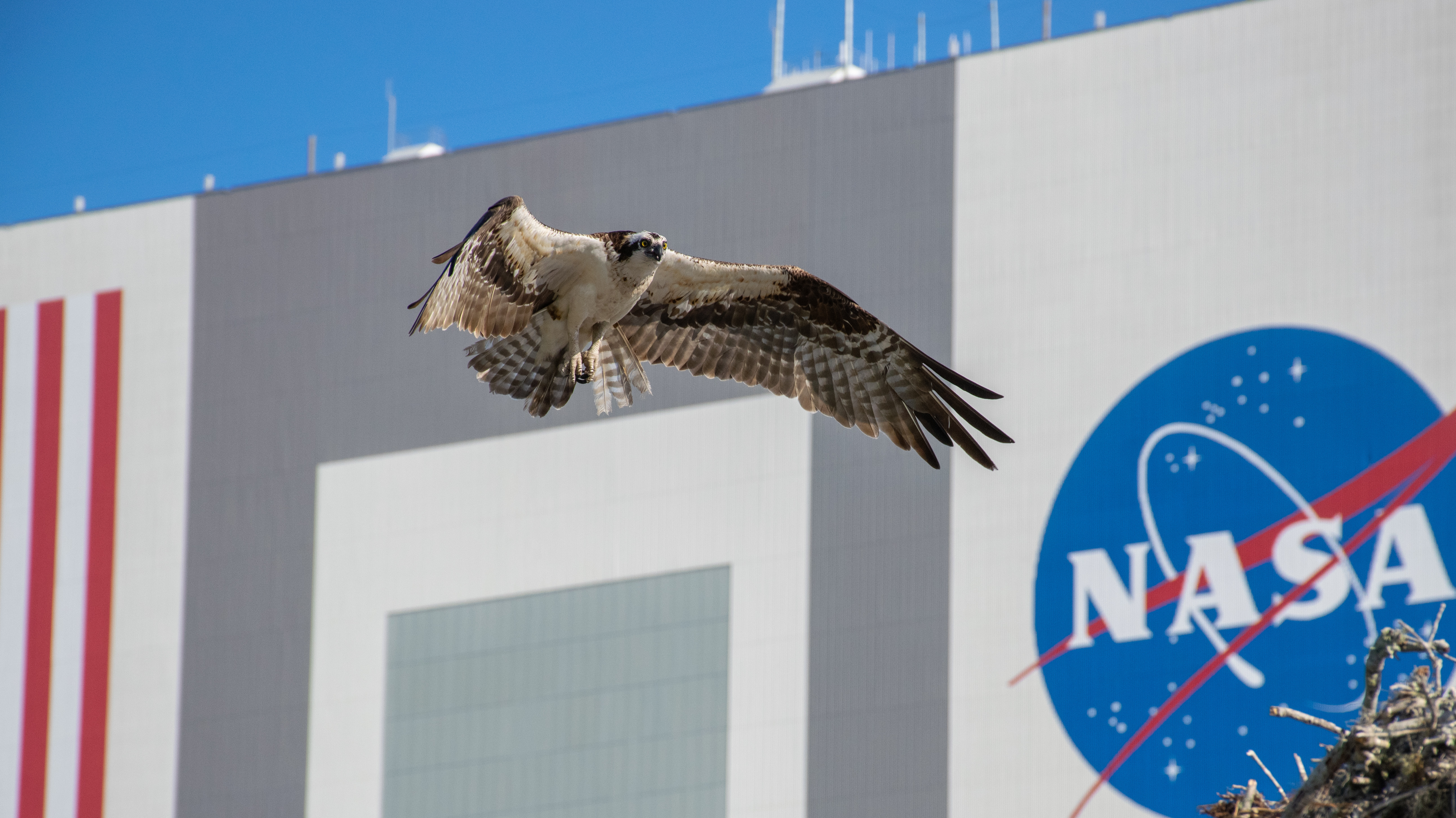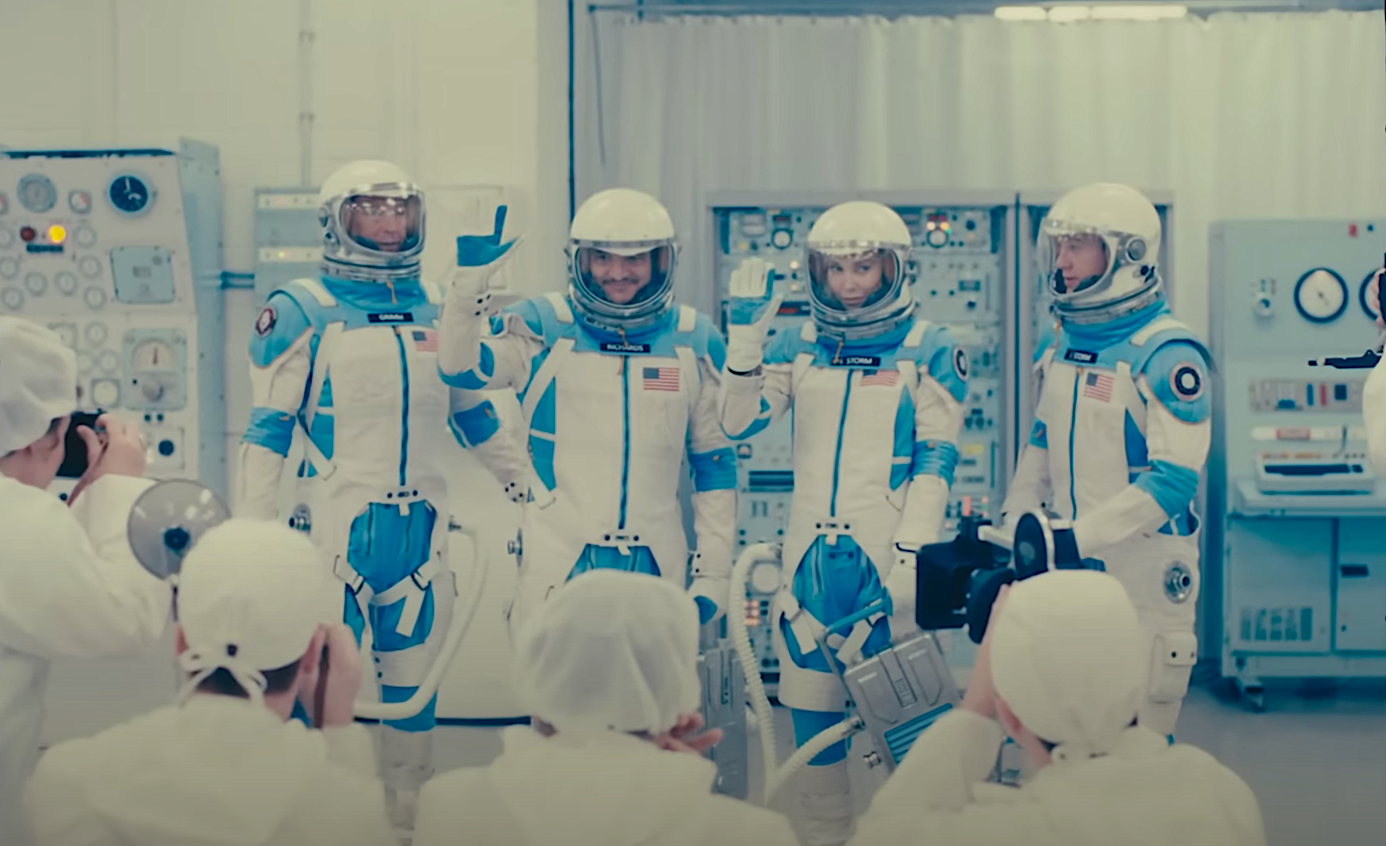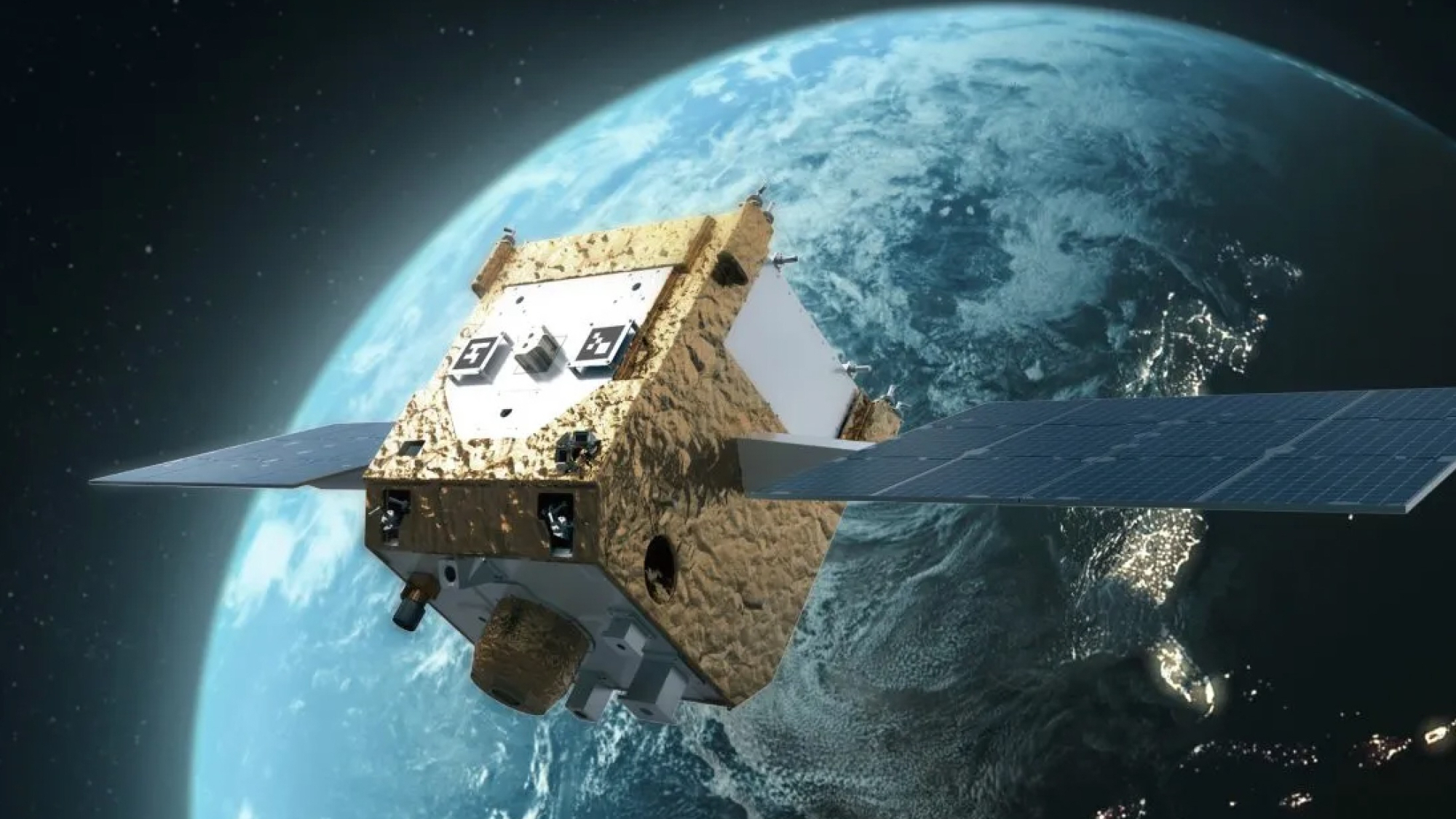Astronauts Complete First Spacewalk in Series to Upgrade Station Batteries
Two NASA astronauts worked to replace batteries outside of the International Space Station, completing the first in a series of five planned spacewalks devoted to upgrading the orbiting laboratory's power system.
Expedition 61 flight engineers Christina Koch and Andrew Morgan worked in the vacuum of space for 7 hours and 1 minute on Sunday (Oct. 6). Their extravehicular activity (EVA, or spacewalk) began at 7:39 a.m. EDT (1139 GMT) and ended at 2:40 p.m. EDT (1840 GMT).
Continuing a process that began with an initial set of battery replacements in January 2017, Koch and Morgan ventured to the far left, or port, side of the space station's backbone truss to work on some of the outpost's older power storage units.
Related: The 1st All-Female Spacewalk Is Back on As NASA Gears Up for 10-EVA Marathon
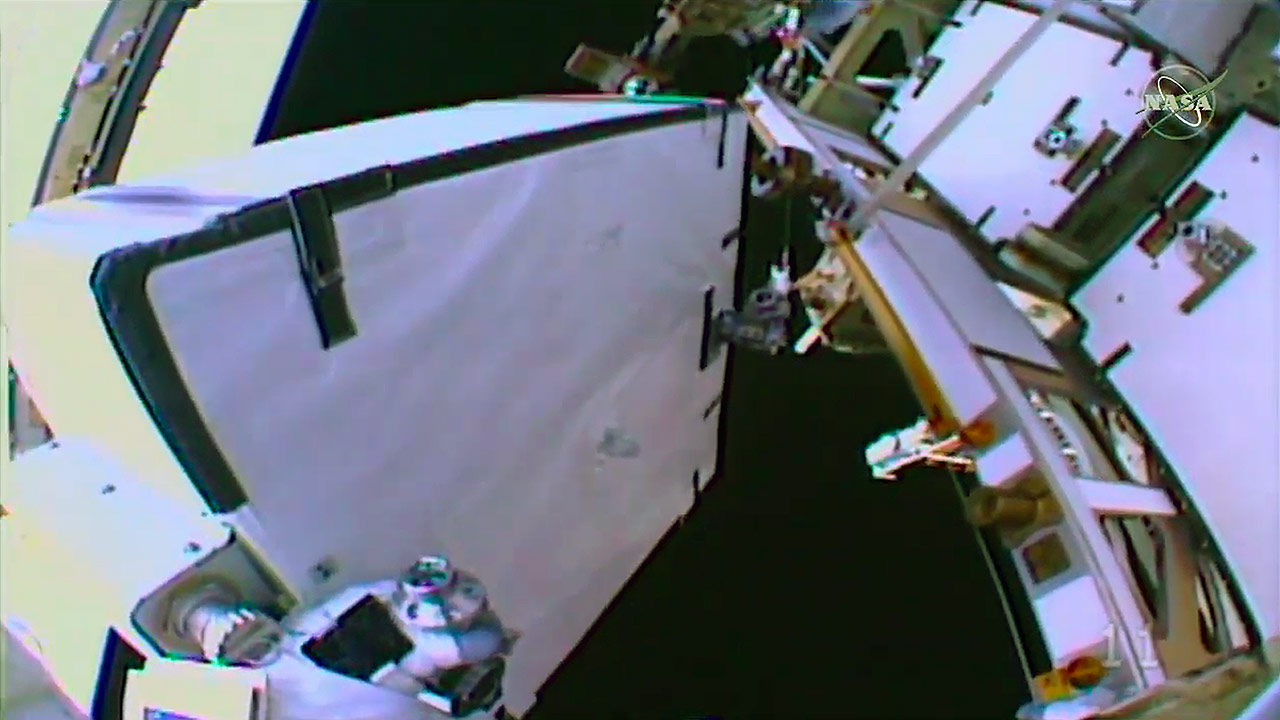
"Oh my goodness, it is gorgeous," said Morgan early in the spacewalk, reacting to the sun rising as he peered off the side of the station at Earth below. "This is pretty awesome."
The space station is powered by eight large solar array wings, four on each side of the truss. The arrays feed electricity to the station's systems when in sunlight and charge a bank of four large batteries mounted at their base for when the station passes into the shadow of Earth.
Koch and Morgan replaced two of the old nickel-hydrogen batteries with two new lithium-ion batteries that were delivered to the space station on board Japan's H-II Transfer Vehicle-8 (HTV-8) that arrived on Sept. 28. Each of the more powerful lithium-ion batteries can hold the charge of two of the nickel-hydrogen batteries.
Get the Space.com Newsletter
Breaking space news, the latest updates on rocket launches, skywatching events and more!
The spacewalking duo first removed one of the older batteries and then, by carefully handing it back and forth to each other, shepherded the massive unit to an empty slot on the nearby exposed pallet holding the new batteries.
"I have the battery," said Koch, holding the nickel-hydrogen battery.
"You have the battery," confirmed Morgan.
Each battery is about half the size of a refrigerator, or 40 inches long by 37 inches wide by 19 inches in height (101 by 94 by 48 centimeters). The old nickel-hydrogen batteries weigh 365 lbs. (165 kilograms) each. The lithium-ion replacements weigh 428 lbs. (194 kg). While weight is not a concern in the microgravity environment of space, the batteries' mass is still a factor in terms of inertia.
The first old battery was "soft-docked" on the exposed pallet about two hours into the EVA.
NASA astronaut Jessica Meir, working from inside the station, then used the Canadarm2 robotic arm to reposition the pallet so that the first replacement battery was within reach of the spacewalkers. Koch and Morgan next repositioned the new lithium-ion battery to the empty slot they had just opened on the integrated equipment assembly on the Port 6 (P6) truss.
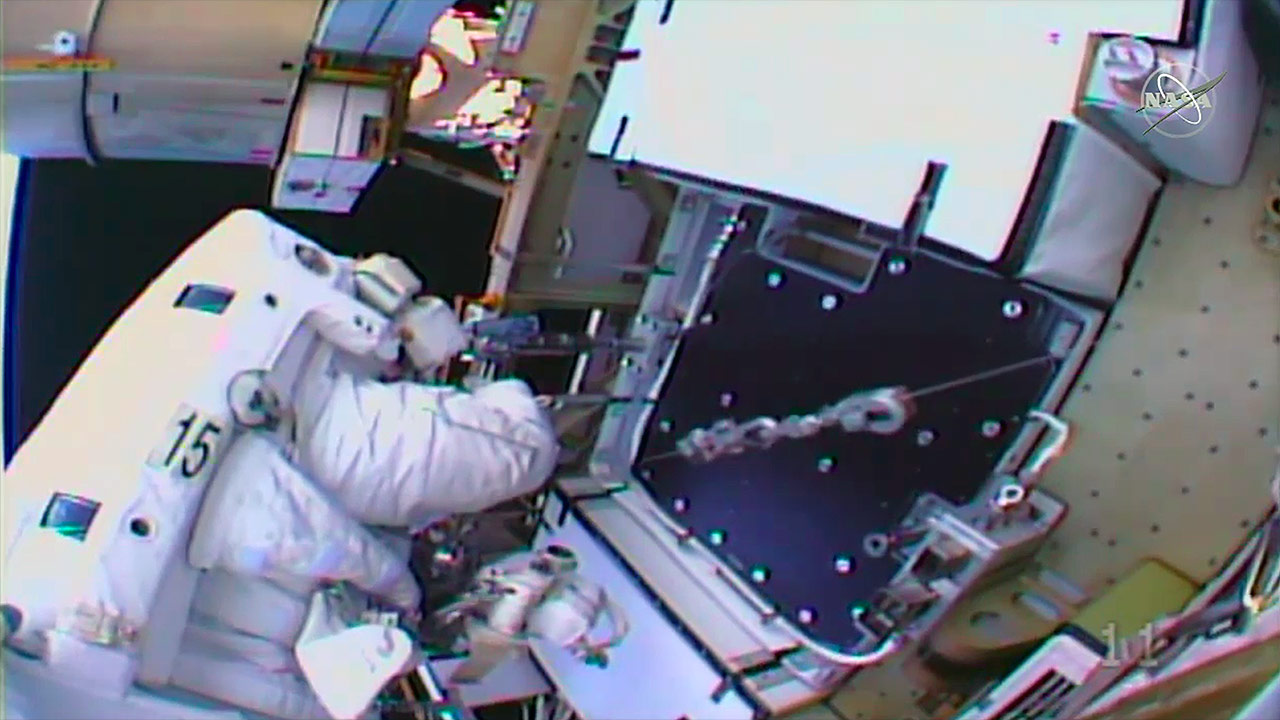
The first new battery was bolted into place about 50 minutes after the old battery was stowed on the exposed pallet.
The astronauts next removed an adapter plate from the pallet and installed it on the truss to integrate the newly-installed lithium-ion battery into the station's electrical system. Working well ahead of schedule, Koch and Morgan were given the go by mission control in Houston to remove another of the nickel-hydrogen batteries and mount it atop the adapter plate, where it will be remain stored for the long term.
Finally, Koch and Morgan moved another of the new lithium-ion batteries from the pallet to the truss, where they installed it in the empty slot vacated by the second nickel-hydrogen unit. The two also repositioned battery maneuvering tools and loosened the torque on bolts securing two nickel-hydrogen batteries in preparation for the next spacewalk.
“It has been a wonderful day,” said Koch once back inside the space station’s Quest airlock. “We look forward to the rest of the series.”
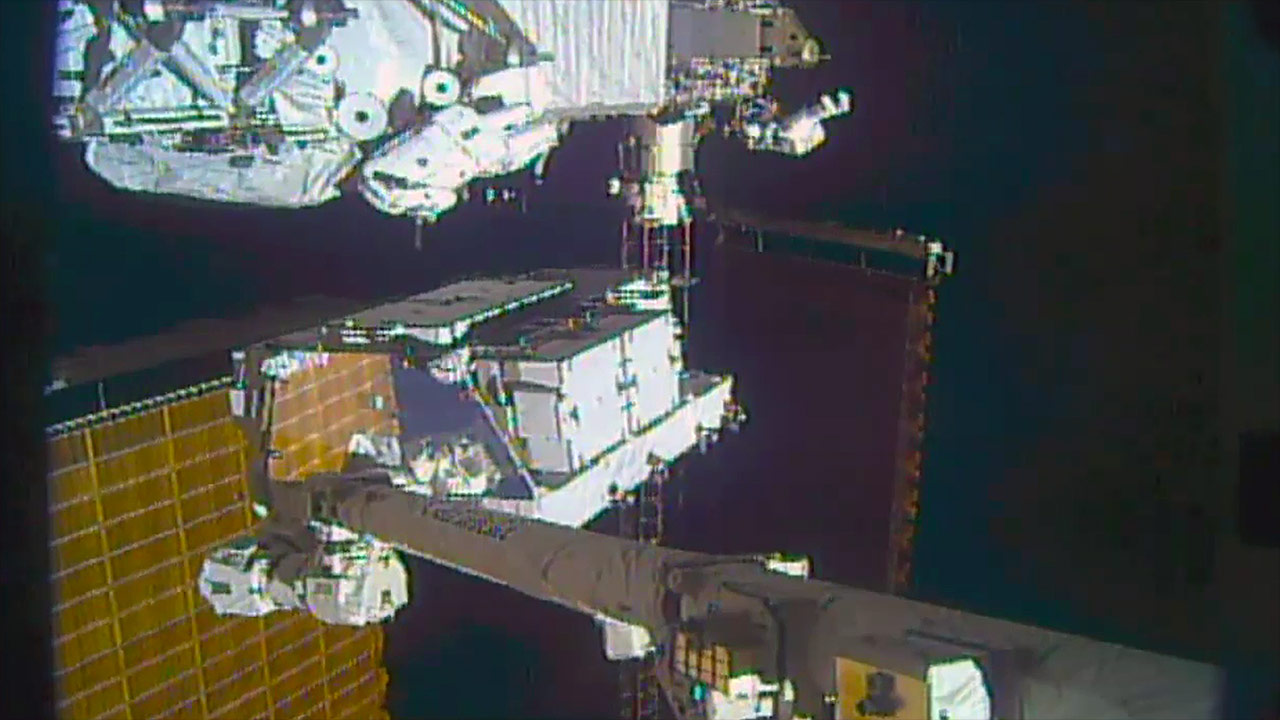
Four more battery replacement spacewalks are currently planned for this month. Koch and Morgan will pair up again for an EVA scheduled for Friday (Oct. 11), followed by spacewalks by Morgan and Meir on Oct. 16 and Meir and Koch on Oct. 21, the latter the first all-female EVA in history. The final planned spacewalk in the series will be conducted by Meir and Expedition 61 commander Luca Parmitano of the European Space Agency (ESA) on Oct. 25.
Another EVA, unrelated to the battery replacements, is scheduled for Oct. 31 by Russian cosmonauts Aleksandr Skvortsov and Oleg Skripochka. Five more U.S. spacewalks by Morgan and Parmitano are slated to follow in November to repair the Alpha Magnetic Spectrometer (AMS) cosmic-ray detector.
Sunday's EVA was both Koch's and Morgan's second spacewalks.
Koch, who served as EV1 (or lead spacewalker) and wore the Extravehicular Mobility Unit (EMU) spacesuit with red stripes now has now logged a total of 13 hours and 46 minutes on her two spacewalks. Morgan, who as EV2 wore the suit with no identifiers, has a total of 13 hours and 33 minutes spanning his two EVAs.
This was the 219th spacewalk devoted to the International Space Station since assembly of the outpost began in 1998. Astronauts and cosmonauts have now spent 1,374 hours and 27 minutes, or 57.3 days, working outside the orbiting complex.
- The International Space Station: Inside and Out (Infographic)
- Astronauts Whipped Up a Pizza Dinner to Prep for Spacewalk
- 1st All-Female Spacewalk Scrapped Over Safety Concerns, Not Sexism
Robert Pearlman is a Space.com contributing writer and the editor of collectSPACE.com, a Space.com partner site and the leading space history news publication. Follow collectSPACE on Facebook and on Twitter at @collectSPACE. Follow us on Twittter at @Spacedotcom and on Facebook.

Join our Space Forums to keep talking space on the latest missions, night sky and more! And if you have a news tip, correction or comment, let us know at: community@space.com.

Robert Pearlman is a space historian, journalist and the founder and editor of collectSPACE.com, a daily news publication and community devoted to space history with a particular focus on how and where space exploration intersects with pop culture. Pearlman is also a contributing writer for Space.com and co-author of "Space Stations: The Art, Science, and Reality of Working in Space” published by Smithsonian Books in 2018.In 2009, he was inducted into the U.S. Space Camp Hall of Fame in Huntsville, Alabama. In 2021, he was honored by the American Astronautical Society with the Ordway Award for Sustained Excellence in Spaceflight History. In 2023, the National Space Club Florida Committee recognized Pearlman with the Kolcum News and Communications Award for excellence in telling the space story along the Space Coast and throughout the world.






